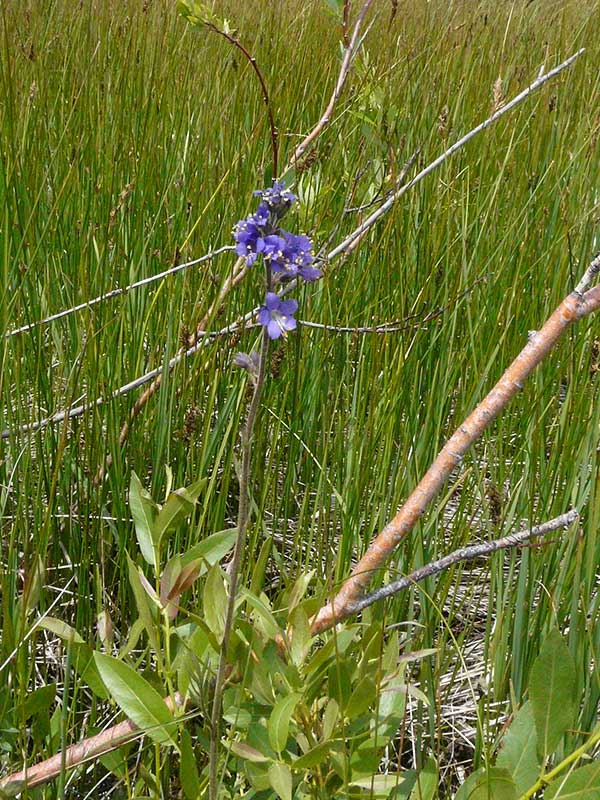Polemonium occidentale / western Jacob’s ladder
- brilliantly blue flowers with bright yellow anthers, in clusters
- pinnately compound leaves with up to 27 narrow, lance-shaped leaflets
- most leaves on separate stems from the flowers
- usually in wetlands
Western Jacob’s ladder is a perennial herb spreading by seeds, and, over short distances, by rhizomes. The flowering stem can be quite tall, i.e. 40 inches. This species is generally found in moist areas such as the fens in the middle of the Valley or along streams.
If you’re slogging through the fen and see something other than the reed-like plants, you’ll probably take a closer look, whether it is in flower or note . Still, the flowers are the best thing about wildflowers, and in this case, they appear throughout the season, so…
The flowers of western Jacob’s ladder are vibrantly blue, and a bit under an inch across. Like other members of the phlox family, they are bell-shaped. The bells are formed from 5 fused petals that form a tube, with the outer ends being free. The inner throat of the bell is white-ish with dark lines. The stamens are not fused to the tube, making this species a but unusual for the family, and extend well beyond the tube. They are quite visible from a distance because the anthers are bright yellow.
The flowers occur in open clusters at the top of a (usually) solitary, long, slender stalk. Both the outer surfaces of the bell and the stalk are covered with sticky (glandular) hairs.
The leaves of the western Jacob’s ladder are also pretty cool. Mostly, they aren’t on the flowering stalk, but are on shorter stems that emerge nearby from the rhizomes. They are compound with up to 27 (but as few as 3) leaflets. Each leaflet is lance-shaped to linear and between ½ to 1½ inches long. They have long petioles, no teeth, and no hairs, but with a waxy blue powder on the lower surface. The leaves on the flowering stalk are fewer and smaller, especially higher up on the stem.
| Color | |
|---|---|
| Family | |
| Blossom size | |
| Inflorescence size | |
| Inflorescence type | |
| When? | |
| Where? |

